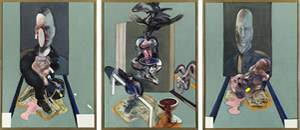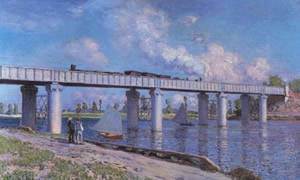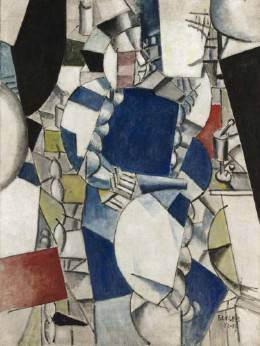
Francis Bacon’s “Triptych 1976” is expected to sell for more than $70 million at Sotheby’s
Photo courtesy of Sotheby’s
FRANCIS BACON’S TRIPTYCH 1976 AT AUCTION
Arguably the most important work by the artist still in private hands, is expected to sell for more than $70 million at Sotheby’s New York, May 14th 2008
]]>
A masterwork of the 20th century Art is for sale. Next May 14th 2008, Sotheby’s will auction “the most important work by Francis Bacon in private hands”, Triptych 1976, which is expected to bring “in the region of $70 million”. Only two contemporary paintings have been auctioned for more than $70 million: Mark Rothko’s “White center (yellow, pink…)” ($72.8 million) and Andy Warhol’s “Green Car Crash (Green Burning Car)” ($71.7 million)
Tobias Meyer, Sotheby’s Worldwide Head of Contemporary Art, said: “This is undoubtedly the most important Bacon in private hands. It has been with the same collection ever since it was acquired from the Bernard show over thirty years ago, and it is a masterpiece of the 20th century. The world has been waiting for a great triptych, and this is it.”
As Sotheby’s says in a press note, “In Triptych, 1976, Bacon draws on Ancient Greek mythology to express his personal tragedy. In the central panel Bacon alludes to the legend of Prometheus, who as a punishment from Zeus is bound to a rock where his liver is perpetually devoured by an eagle. It is also a modern day interpretation of Aeschylus’ famous trilogy The Orestia. To avenge the death of his father at the hands of his mother, Orestes commits matricide and is plagued by the three Furies, the manifestation of guilt. Here, in the central panel, the human form is plagued by three hybrid biomorphic vultures, symbolic of Bacon’s inner demons (…) In either side panel, two ominous portraits, like propaganda posters, bear witness to the scene taking place, raised up on structures reminiscent of the rails used for movie-cameras. In the foreground, an imbroglio of human forms – half-dressed, half-naked – exhibit some the best paint-handling witnessed anywhere in Bacon’s oeuvre, contrasted against areas of bare canvas, Letraset and thick pools of white oil. In the right, two heads and a row of teeth emerge from the conflation of anatomical forms and flesh-coloured shadows”
The sale will be a great opportunity to check if the Art market is still “hungry” for great works by Francis Bacon. Last February, another triptych by Bacon was sold for $51.7 million at Sotheby’s, and in 2007 Christie’s sold a “Study for Innocent X” for $52.7 million.
Follow us on:


